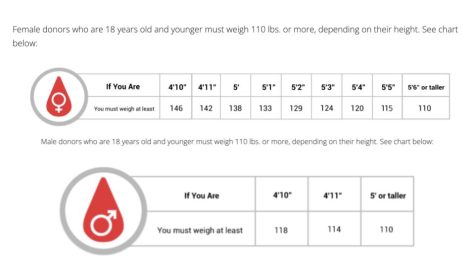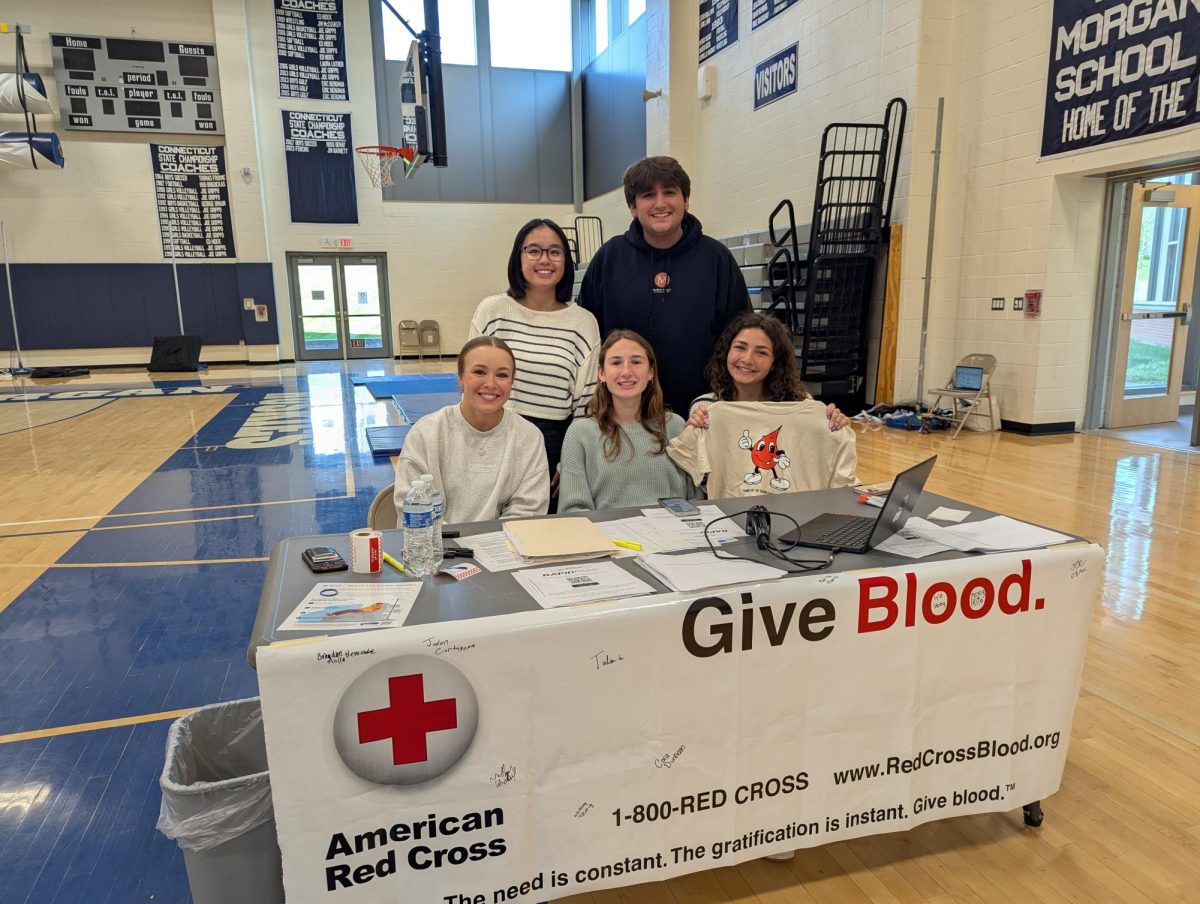On Thursday, April 24th, The Morgan School hosted a blood drive inside the gymnasium, run by the National Honor Society. Out of the 477 people at Morgan, 23 people donated blood.
Last Year’s Blood Drive
Last year, the blood drive had 32 people donating blood, which saved 96 lives. Every pint of blood donated saves three lives, according to Cedars-Sinai, a nonprofit medical center in Los Angeles.
Problems behind giving blood:
Someone in the U.S. needs blood every two seconds; that’s thirty people every minute, according to the Red Cross. Donating blood is very important, but people have to make sure they don’t have any transmitted diseases before giving blood. A series of tests is performed on donated blood to detect infectious diseases. These tests include screening for HIV, hepatitis B and C, syphilis, and other blood-borne diseases.
How it worked:
Each person is given about a pint of blood away, which may seem like a lot, but the lost plasma is gained back within 24 hours. To help students through the process, NHS members were tasked with navigating donors from location to location. Senior Luke McComiskey, who helped out with the event, said, “It was fun to see people I know give back, and as someone in the Honors Society, I would escort people from their bed to the snack area and have them sit there for about 15 minutes to make sure they felt ok.”
In order to give blood, donors were required to be at least 16 years old, and had to give a permission slip if under the age of 18. Donors also had to be a certain height and weight to give blood.

During the process of giving, donors were asked to lie down on a bed in the Morgan gym. There were other students in the gym at the same time. It took about 45 minutes for the blood giving process to end, and then you had to wait 30 minutes afterward to make sure that you didn’t feel lightheaded before going back to class for the rest of the day. Senior Gavin Baptista, who donated, said,” I gave blood because it’s a very impactful and easy way to help people. The process itself is simple and quick, making it even easier to do a good thing.” Batista highlighted the fact that, due to its simplicity, there was no reason for him not to do it and give back to people in need.
While talking to Ms. Gilbert, 44 people signed up for the drive and showed up at the gymnasium. Nine people did not make it to pass the first round of the test, which is making sure you are a certain height and weight. We had 35 individuals move on to the medical assessment and donation portion. However, there are often people “deferred” for a variety of reasons. These reasons include having low hemoglobin (iron), having a pulse or blood pressure that is outside the required range, or not meeting another health requirement. After all tests were done, 23 successful donations, which can save up to 69 lives.

Why some people didn’t donate:
If practicing sports that day, athletes had to take it lightly, and were unable to play in sports games that day. The Morgan boys lacrosse team had a game, so nobody on the team participated. It’s very dangerous to give blood as an athlete because your body is trying to regenerate blood, and doing physical activity can be dangerous and cause you to pass out. While talking to senior captain of the track team, Michael Fusco, he said, “It’s not that I didn’t want to donate blood. If I were to, I would have missed practice a day before an important meet. This was one of our first meals, so it was very important not to miss it.” This is the case for a lot of athletes, which is a huge percentage of our school.



